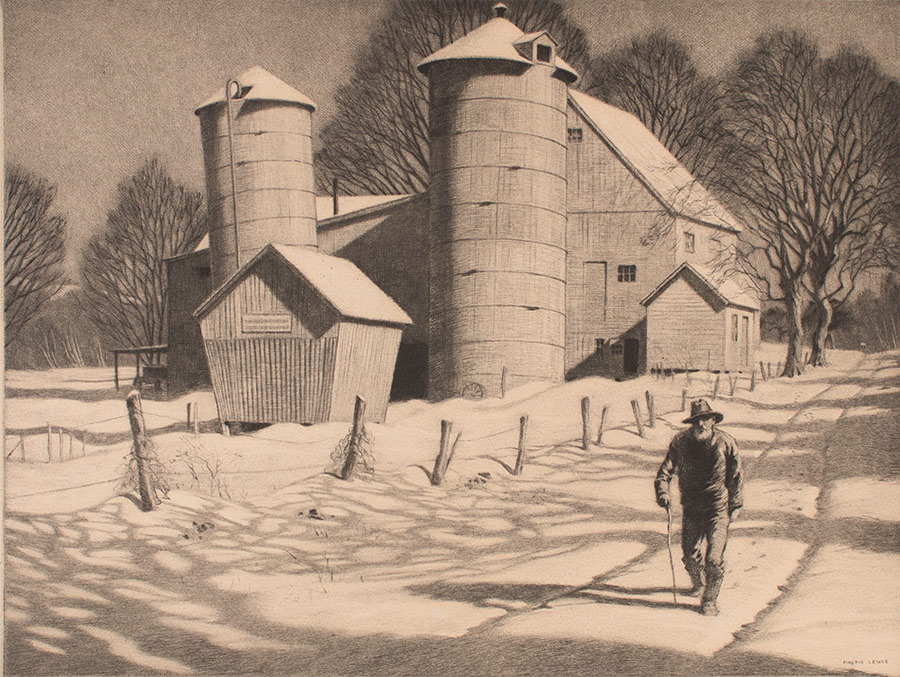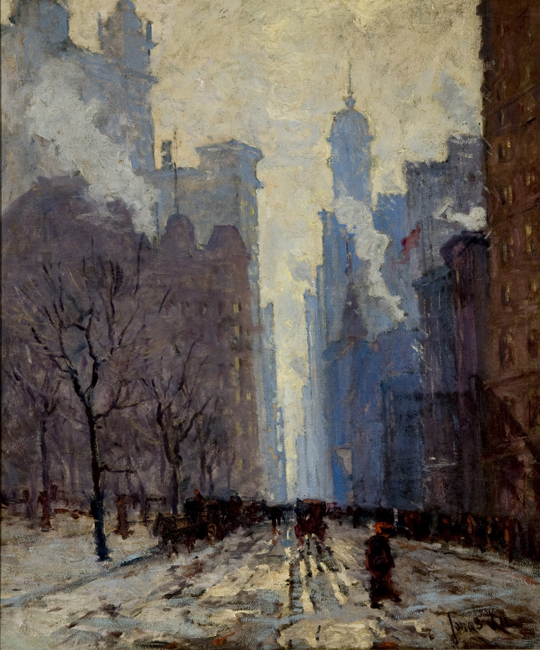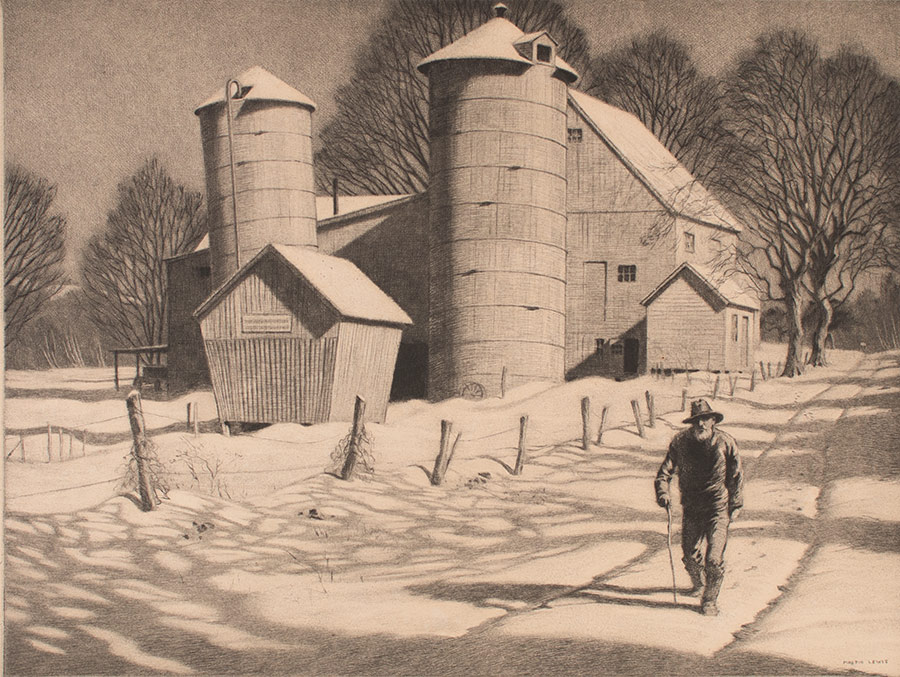Flashback to December, and I am looking out the window at a sheet of ice, deposited in my corner of the Blue Ridge by the December Nor’easter that is rapidly dumping huge amounts of snow on various parts of the East Coast. Those readers in the storm’s path will perhaps commiserate with my trepidation at venturing out to walk the dog in a few minutes. Those (perhaps a majority) in and around Winter Park will, on the other hand, likely congratulate themselves for their foresight and good fortune to live in Florida. Wherever you are, I hope you will join me in considering a pair of winter scenes which I have recently had the opportunity to consider. The first, Untitled (Grandpa Takes a Walk), is by Martin Lewis, an artist about whom I wrote recently. The other, Dusk on Lower Broadway, by Jonas Lie, might be new to you. Together, I think, they capture the two poles of American life in the wintertime.

Grandpa Takes a Walk dates from the period when Lewis lived in Sandy Hook, Connecticut, having been driven with his family out of New York due to the ravages of the Great Depression. During this time in his life Lewis turned his sharp eye on scenes of American winter, becoming a master of the subtleties of shade and value created by thin winter light shining on big piles of snow.1 There is to my mind no finer an example of a winter scene in Lewis’s oeuvre; perhaps none finer in American art writ large. The old man walks with a cane, but jauntily, tracing the route of a country lane gently blanketed by a thick carpet of nearly pure white snow. The long shadows of nearby trees speak to the short days of winter, but also to the beautiful radiance of sunshine after a snowstorm. The barn that looms behind the man presents a mix of old-fashioned New England clapboard and the modern technology of the grain silo, insisting that this is not a nostalgic scene but rather one of everyday life in what was then the present. Lewis’s mix of sharply defined drypoint and sand ground is perfectly suited to capturing snow’s blend of softness and sharp whiteness.

Lie, perhaps the most successful Norwegian-born American artist, was just a year older than Lewis, though he got his start as an artist as a much younger man. He developed his mature style under the influence of Impressionism, becoming interested in New York City scenes after settling there in 1910, around when he painted Dusk Over Lower Broadway.2 In this work, Lie paints not the white powder of rural Connecticut, but rather the slushy aftermath of a storm in the city. Those who have spent a winter in New York will recognize this scene, with relatively untrammeled snow in the park at the left of the painting contrasting sharply with the wet muddiness of the street. Plumes of smoke rise from the buildings along the famous thoroughfare, working along with the bundled-up pedestrian in the foreground to establish the wintry chill. Despite the dirty street and the reminder of the sometimes-difficult life of wintertime New York this scene is suffused with just as much beauty as Lewis’s. Lie gives the sky a touch of pale gold as it reaches down between the slate gray of the buildings to touch the Earth, a reminder, perhaps, of the transcendental possibilities inside us all.
These two works capture, I think, two of the joyous modes of wintertime life in America. I hope that each of you had a warm and joyous holiday season. I look forward to continuing to share my research with you as we embark on more art conversations in 2021!
1 Paul McCarron and Martin Lewis, The Prints of Martin Lewis: A Catalogue Raisonné (Bronxville, N.Y: M. Hausberg, 1995), 24.
2 William H. Gerdts, Carol Lowery, and Jonas Lie, Jonas Lie (1880-1940) (New York, NY: Spanierman Gallery, 2005), 7–8, 23.


